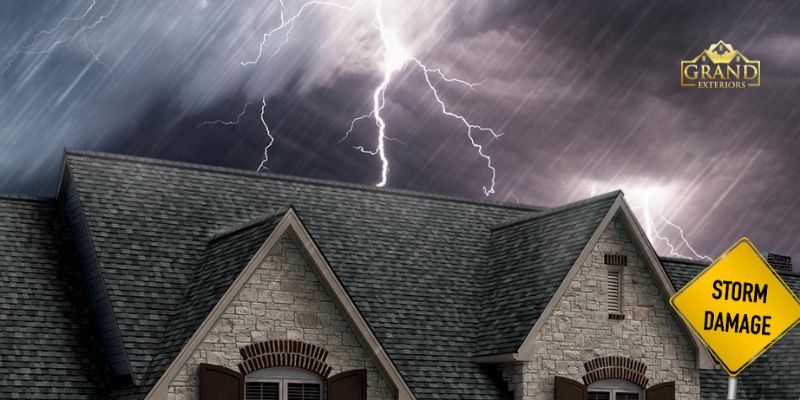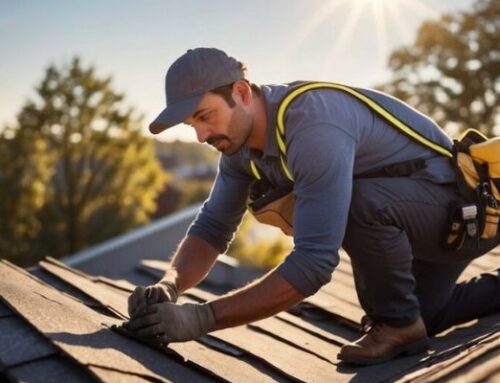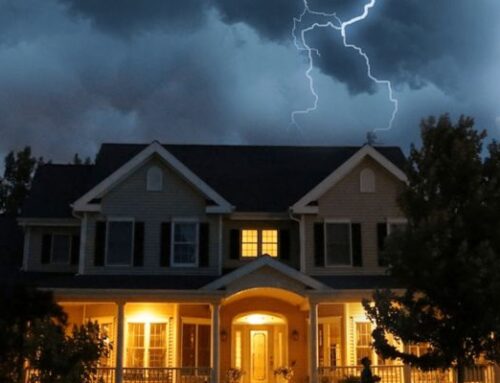As the world struggles with the increasing frequency and intensity of storms, homeowners are faced with a growing threat to their most significant investment: their homes. While the immediate impact of a storm is often apparent, the hidden storm damage costs can be even more disturbing.
In this comprehensive guide, we will explore the repair costs after storm damage and offer you valuable insights on how to mitigate these costs.
Understanding the Immediate Storm Damage Costs
When a storm strikes with its fury, the initial storm damage restoration costs are generally evident. These include:
Property Damage: This includes damage to the roof, windows, siding, and other structural elements of your home. In severe cases, trees might fall on your home and cause extensive damage.
Water Damage: Broken windows and leaky roofs can allow water to enter your home, leading to mold growth, water damage, and the need for extensive repairs.
Loss of Personal Property: Storms can destroy personal belongings, from electronics to furniture, which may require costly replacement.
Temporary Shelter: If your home is uninhabitable due to severe damage, you may need to find temporary shelter. Hotel costs, eating out, and other living expenses can quickly add up.
Emergency Repairs: You may need to make emergency repairs to prevent further damage and minimize the cost of storm damage repairs. These include boarding up broken windows or tarping a damaged roof.
The Hidden Storm Damage Costs
While these immediate costs are substantial, the hidden or unexpected storm damage costs can be even more financially burdensome. It’s crucial for you to understand these less obvious expenses and take steps to mitigate them.
Structural Damage and Repairs
In the aftermath of a storm, homes stand as silent witnesses to nature’s wrath. Crushed roofs, fallen trees, dislodged siding, and rain-infiltrated walls are some of the most prominent signs of storm damage. Each of these scenarios demands swift and substantial repairs.
The process begins with professionals visiting the home and estimating storm damage repair costs. By conducting a thorough analysis, it is possible to unravel the hidden costs of storm damage.
Coverage Limits and Insurance Gaps
While insurance is a lifeline for homeowners in storm-stricken times, insurance gaps and coverage limits can hinder its reliability. Policies may exclude certain types of storm damage, leaving homeowners battling with unexpected storm damage costs.
Additionally, coverage limits may prove insufficient to fully address the extent of necessary repairs. Regular policy reviews are necessary to ensure that homeowners understand their coverage and available rights. Proactively managing insurance becomes important while seeking storm-related financial protection.
Temporary Housing and Displacement Costs
After a severe storm, the often-overlooked challenge is the temporary housing solutions. Displaced homeowners must tackle not only the emotional toll of leaving familiar surroundings but also the financial strain of paying for alternative accommodation options.
Rental properties, hotel stays, or even staying with friends or family incur immediate costs that accumulate rapidly. Beyond the monetary aspect, the inconvenience of living away from home disrupts daily routine and amplifies the overall stress.
Displacement affects both financially and emotionally. It is among the most significant hidden storm damage costs that extend beyond the visible repairs. This emphasizes the need for homeowners to plan for a wide range of challenges in the wake of a destructive storm.
Loss of Personal Property
Storms, with their fierce elements, not only threaten the structural integrity of homes but also destroy personal belongings. High winds and floods spare no one, causing destruction to appliances, furniture, and other valuables.
The emotional toll of losing sentimental items is unexplainable. The task of evaluating and cataloging the extent of personal property damage is an arduous one. It usually reveals the far-reaching consequences of a ferocious storm.
Homeowners, already dealing with tangible repairs, find themselves navigating the tough terrain of unforeseen expenses and emotional distress, emphasizing the importance of evaluating the hidden but major storm damage costs.
Mold and Mildew Remediation
Water damage is a common aftermath of storms, which can create a breeding ground for mold and mildew. Remediation efforts to get rid of these health hazards may involve professional assistance. Failure to address this issue could lead to long-term health problems and enhance the extent of storm damage.
Landscaping and Outdoor Repairs
Storms leave an indelible mark not only on the both exteriors and interiors of a home. For instance, you come across uprooted trees, mangled fences, and battered outdoor structures. This demands extensive landscaping and repairs.
The restoration of outdoor spaces is a process often considered less important. However, re-establishing the functionality and external aesthetics of a property demands both time and financial investment.
The true aftermath of a storm encompasses not only the interior but the entire landscape surrounding a home. Homeowners must deal with the dual challenges of beautifying their surroundings while ensuring the integrity of their outdoor spaces.
Increased Utility Costs
Beyond its visible impact, storm damage costs silently influence a homeowner’s day-to-day life. Prolonged power outages, water supply issues, or gas leaks not only pose immediate inconveniences but also lead to increased utility costs.
Inefficiencies in systems or power outages can elevate utility bills unexpectedly. While the focus often remains on visible damages, the continuous increase in utility expenses becomes a persistent post-storm challenge.
Ensuring the proper functioning of a home’s essential services is not just a matter of comfort but a crucial step in minimizing the ongoing financial implications of storm damage.
Hidden Structural Issues
Storm damage can unleash some unknown and older structural issues in a home. What seems like a simple repair could reveal severe underlying issues that require additional attention and investment. It’s essential to conduct thorough inspections to address any hidden issues and prevent future complications.
Emotional and Mental Health Costs
In addition to the financial impact of storm damage, it can also affect your mental and emotional well-being. Dealing with the aftermath of a storm, navigating insurance claims, and overseeing repairs can be overwhelming. It’s important for homeowners to recognize the emotional strain and seek support when needed.
Ways to Minimize the Storm Damage Costs
While you can’t prevent storms, there are several steps you can take to mitigate the hidden costs associated with storm damage. Here are the ways to reduce the storm damage cost:
Review Your Insurance Policy: Carefully review your homeowners’ insurance policy to understand what is and isn’t covered. Make sure you have adequate coverage for potential storm-related damages. A good insurance policy can offer required financial assistance for storm damage.
Maintain Your Home: Regular maintenance can help prevent a few storm-related damages. Regularly trim trees near your home, make necessary repairs promptly, and secure loose items that could become projectiles in high winds.
Create an Emergency Fund: Having an emergency fund can help cover immediate costs like deductibles and temporary shelter expenses.
Document Damage: After a storm, document all damages thoroughly. Take photographs and keep records of all expenses related to storm damage.
Seek Professional Help: Don’t attempt to assess and repair storm damage yourself. Hire professionals to evaluate the extent of the damage and make repairs to prevent further issues.
Consider Additional Coverage: Depending on where you live, you may need additional insurance coverage for specific storm-related risks, such as flood or earthquake insurance.
Prepare an Emergency Kit: Assemble an emergency kit with essentials like water, non-perishable food, flashlights, and first aid supplies. If you can remain in your home during a power outage, this can help you save on temporary shelter costs.
Consult a Public Adjuster: In cases where insurance companies dispute claims or when it’s unclear what your policy covers, consult an attorney experienced in insurance law to protect your interests.
Landscaping Considerations: When landscaping your property, consider using plants and trees that are less prone to storm damage. Proper landscaping planning can help reduce potential storm repair costs.
Home Safety Measures: Invest in storm-resistant features such as reinforced roofing, impact-resistant windows, and secure entry doors. These upgrades may initially cost more but can significantly reduce the risk of severe damage in future storms.
Community Preparedness: Get involved in community efforts to improve storm preparedness, such as joining local emergency response teams or attending workshops on disaster preparedness. A well-prepared community can mitigate the overall impact of storms and reduce the hidden storm damage costs.
Regular Inspections: This is one of the most recommended ways to minimize storm damage expenses. Schedule regular inspections of your home’s structural integrity, including the roof, foundation, and electrical systems. Identifying potential issues early can save you from more extensive, costly repairs later.
Conclusion
Storm damage can have a significant impact on your home and finances. While the immediate costs are evident, the hidden costs can be even more burdensome. By understanding these storm damage costs and taking steps to mitigate them, homeowners can better prepare for the financial consequences. It’s important to review your insurance coverage, maintain your property, and be proactive in disaster preparedness to minimize the impact of storms on your home and wallet.




